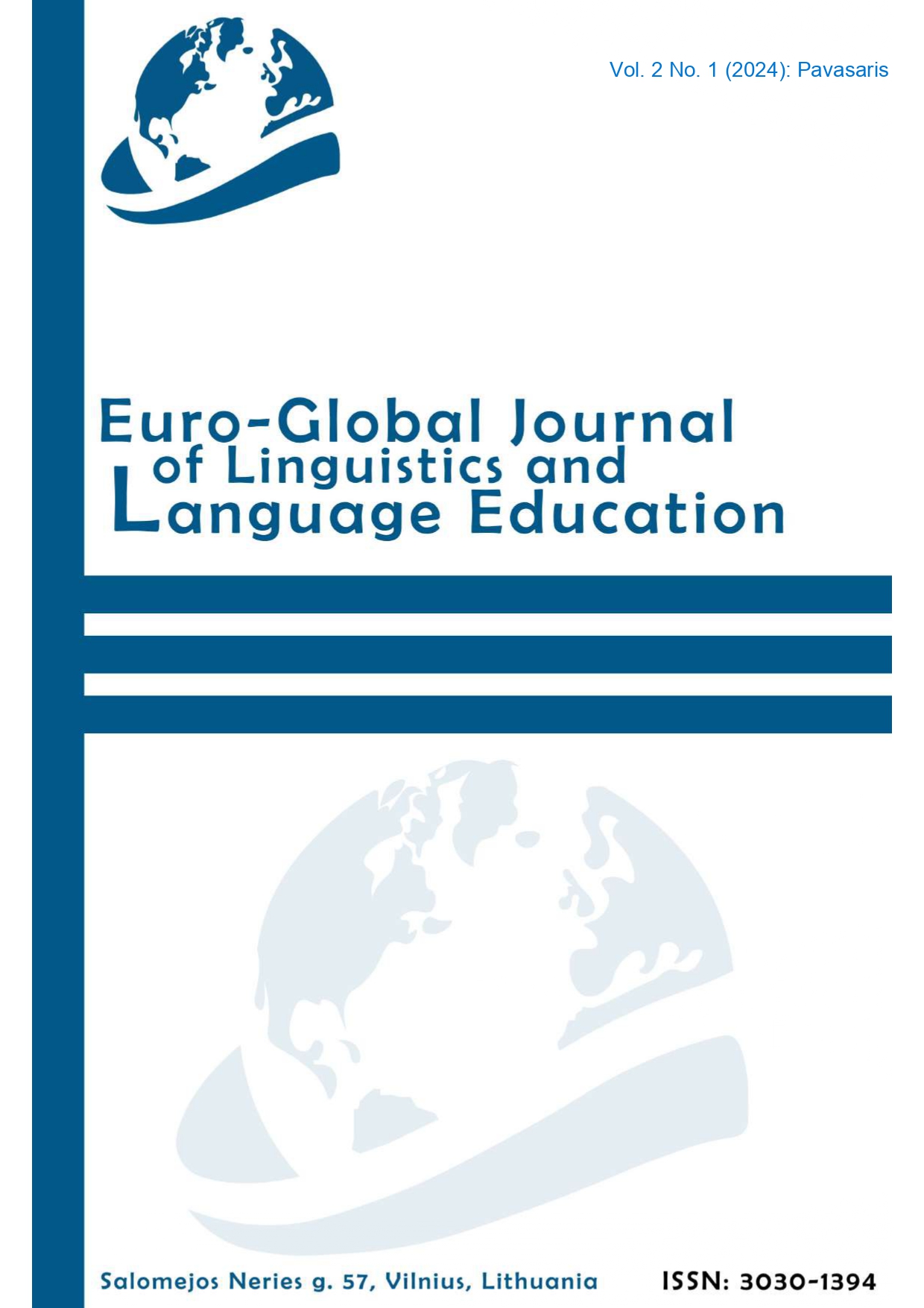Leveraging Artificial Intelligence in Linguistics: Innovations in Language Acquisition and Analysis
##semicolon##
https://doi.org/10.69760/egjlle.250006##semicolon##
Artificial Intelligence##common.commaListSeparator## Linguistics##common.commaListSeparator## Language Acquisition##common.commaListSeparator## Natural Language Processing##common.commaListSeparator## Machine Learning##common.commaListSeparator## Deep LearningSantrauka
Artificial Intelligence (AI) has become a transformative tool in the field of linguistics, providing innovative approaches to studying language acquisition and analysis. This article offers a detailed exploration of AI’s applications in linguistics, with a focus on its contributions to understanding language learning and processing. Using methods such as Natural Language Processing (NLP), Machine Learning (ML), and Deep Learning (DL), researchers are uncovering new perspectives on linguistic phenomena and advancing the study of language.
NLP, ML, and DL have enabled the automation of linguistic data analysis with remarkable accuracy and efficiency. NLP techniques allow researchers to process and analyze natural language text through tasks like part-of-speech tagging, syntactic parsing, named entity recognition, and sentiment analysis. Meanwhile, ML algorithms facilitate the development of predictive models for language acquisition and usage by leveraging large linguistic datasets. Additionally, DL models, particularly neural networks, have shown exceptional capabilities in identifying complex linguistic patterns and capturing semantic relationships.
In the context of language acquisition research, AI is instrumental in modeling the cognitive processes involved in learning a language. By employing computational simulations and models, researchers can examine how learners acquire phonology, morphology, syntax, and semantics. AI methods also provide valuable tools for studying language development trajectories, analyzing learner productions, and identifying error patterns, offering deeper insights into the mechanisms of language acquisition.
##submission.citations##
Cho, K., Van Merriënboer, B., Bahdanau, D., & Bengio, Y. (2014). On the properties of neural machine translation: Encoder-decoder approaches. arXiv preprint arXiv:1409.1259.
Chomsky, N. (1957). Syntactic structures. Mouton de Gruyter.
Devlin, J., Chang, M. W., Lee, K., & Toutanova, K. (2019). BERT: Pre-training of deep bidirectional transformers for language understanding. In Proceedings of the 2019 Conference of the North American Chapter of the Association for Computational Linguistics: Human Language Technologies, Volume 1 (Long and Short Papers) (pp. 4171–4186).
Elman, J. L. (1990). Finding structure in time. Cognitive Science, 14(2), 179–211.
Graves, A., Schmidhuber, J., & Mohamed, A. (2006). Off-line handwriting recognition with multidimensional recurrent neural networks. In Advances in Neural Information Processing Systems, 18, 545–552.
Gulordava, K., Bojanowski, P., Grave, E., Linzen, T., & Baroni, M. (2018). Colorless green recurrent networks dream hierarchically.
Jurafsky, D., & Martin, J. H. (2019). Speech and language processing: An introduction to natural language processing, computational linguistics, and speech recognition (3rd ed.). Pearson.
Mikolov, T., Sutskever, I., Chen, K., Corrado, G. S., & Dean, J. (2013). Distributed representations of words and phrases and their compositionality. In Advances in Neural Information Processing Systems (pp. 3111–3119).
Pang, B., & Lee, L. (2008). Opinion mining and sentiment analysis. Foundations and Trends® in Information Retrieval, 2(1–2), 1–135.
Pennington, J., Socher, R., & Manning, C. D. (2014). GloVe: Global vectors for word representation.
Ryant, N., Church, K., Liberman, M., Khudanpur, S., & Cole, R. (2019). Automatic forced alignment on the TIMIT corpus. In Proceedings of the 42nd Annual Meeting of the Association for Computational Linguistics (ACL) (pp. 1938–1943).
Vaswani, A., Shazeer, N., Parmar, N., Uszkoreit, J., Jones, L., Gomez, A. N., … & Polosukhin, I. (2017). Attention is all you need. In Advances in Neural Information Processing Systems (pp. 5998–6008).
##submission.downloads##
Publikuota
Numeris
Skyrius
##submission.license##
##submission.copyrightStatement##
##submission.license.cc.by-nc-nd4.footer##




